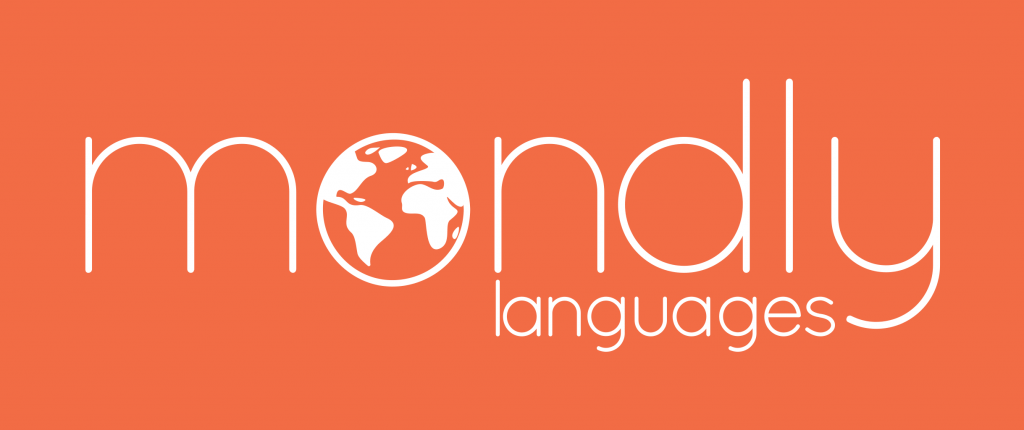4 reasons to include Augmented Reality in your business strategy
The global Augmented Reality market is expected to reach 461.25 billion US dollars by 2030 at a compound annual growth rate (CAGR) of 41.50% according to this report.
Read on to learn why this is the time to include Augmented Reality in your business strategy for 2023.
Augmented Reality global market and user statistics from Google and Snap:
- 66% of people are interested in using augmented reality technology for help when shopping
- By 2025, nearly 75% of the global population and almost all smartphone users will be frequent AR users
- More than 100 million consumers are shopping with AR online and in stores
- 61% of people use AR for communication (Snap)
- 6 in 10 people identify shopping as their main reason for using AR
- The majority are discovering AR through social/communications apps
- 76% of people expect and desire to use it as a practical “tool” in their everyday lives
- 3 in 4 people recognize AR as useful
- Interacting with products that have AR experiences leads to a 94% higher conversion rate
- Industries use AR to delight customers: entertainment, education, fashion, health & beauty, education, travel, automotive

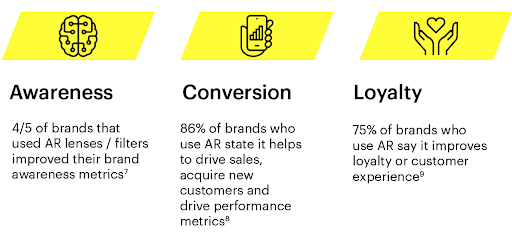
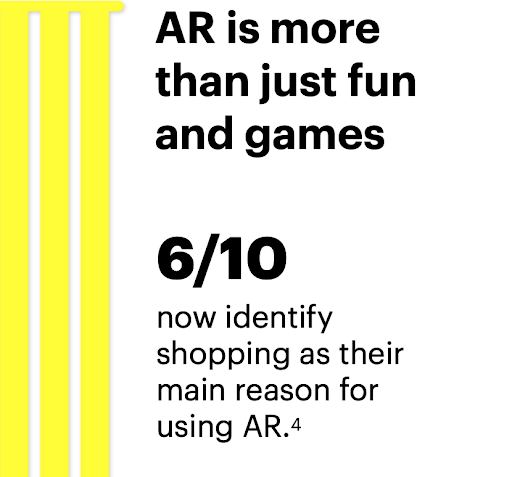
4 reasons for including Augmented Reality in your business strategy
1. Seamless shopping experience & increased sales
How many companies are competing for your customer’s attention? Your competitors, TikTok, Facebook, Instagram, activity apps and Netflix.
Who is getting their attention? Whoever provides them with the best experience whether it’s entertainment, learning or shopping for a new pair of glasses.
As Snap states in its 2022 report, 3 in 5 eCommerce brands agree AR is an essential part of its marketing and sales efforts thanks to its unique ability to offer immersive experiences throughout the entire customer journey: awareness, consideration, conversion and loyalty.

4 top rules to increase your sales
Augmented Reality Business Use Cases
IKEA
IKEA is one of the first major brands to use AR to help customers make the right decisions when shopping for their products. In 2017, they developed IKEA Place, an AR application showing customers how virtual IKEA items would look in any given space. The AR application was a success: 2 million downloads and over 2 billion website visitors.
L’Oreal
L’Oreal is one of the most innovative companies in the global beauty market. The company provides customers with Augmented Reality and Artificial Intelligence powered tools to virtually try on its hair and makeup products or to measure skin ageing. By developing and including beauty tech, L’Oréal’s e-commerce sales grew by 25.7% in 2021 (9.3 billion euros), an amazing jump from 15.6% in 2019 (4.6 billion euros).
2. Customers already have and use AR – no adoption is needed
Whenever there is a breakthrough in technology, the main challenge businesses face is persuading customers to adopt it. Depending on the type of technology and the psychographics of the customer base, the technology is easier or more difficult to adopt. A great example is the ATM; it was invented in the late 1960s but wasn’t adopted until the 1980s because people didn’t trust a machine to give them their money.
In the case of Augmented Reality, the adoption has already taken place. There is no need for your business to persuade your customers because the smartphone in their hands grants them instant access to Augmented Reality.
3. Meeting your customers’ expectations for convenience and support
Your customers are comfortable with using Augmented Reality and are expecting brands to offer them a unique experience. They are looking to your business for support in whatever they want to achieve. Meet their expectations by providing them with Augmented Reality powered tools which show them how your furniture would look in their home or how to learn to play the piano or how to install a device by giving them AR instructions.
4. The opportunity to stand out from your competitors
Augmented Reality has sparked the imagination of professionals in marketing and advertising since its first emergence on the business horizon. They realized they could make advertising campaigns come alive and give audiences a way to interact with their ideas. It was the dawn of a new era: the phygital (physical + digital).
MLKonMLK by Lenovo
There are 955 streets that bear Martin Luther King Jr’s name and Lenovo transformed all of them into an immersive experience to celebrate black history. The company partnered with the DuSable Museum of African American History and created the MLKonMLK AR campaign, an immersive educational experience that brings Martin Luther King Jr.’s “I Have a Dream” speech to every single MLK street using augmented reality.
HBO x Snap for House of the Dragon premiere
In an effort to reach fans for the much-awaited prequel, the TV channel and streaming service launched a mega marketing campaign spanning social media, outdoor, digital, mainstream TV spots, promotions on selected distribution partners, live experiences and activations.
On Snap, users were given access to two in-app AR experiences. In the first experience, the user is transformed into a fire-breathing dragon. In the second, AR renderings of the show’s dragons are revealed over local landmarks all over the globe.
XR creator Dominik Hackl: I developed Magic Keys to bring more joy to people
For his performance in the holocaust drama The Pianist, leading actor Adrien Brody won an Academy Award. A method actor, Adrien went to great lengths to portray his character, the Jewish Polish pianist who loses contact with his family during the Second World War and the struggles he faces to survive. To get into his character’s mindset, he lost 30 pounds in weight, sold his home and car, broke up with his girlfriend and practised the piano for four hours a day until he could master passages from compositions by Chopin.
Adrien Brody was 29 when he learned to play the piano. This goes to show that you can learn to play the piano at any age, even as an adult! It’s true that it’s too late to become a concert pianist, but if what you’re looking for is having fun playing music, there’s no better time than today.
If you’re reluctant to take up playing the piano because of the steep learning curve (you know: learning the notes, the music terms and so on), the Magic Keys app is the perfect solution.
Magic Keys is an extended reality app that helps you learn to play the piano in a new and easy way (you can learn the notes later).
The app was developed by Dominik Hackl, a passionate game developer with a strong interest in Virtual and Augmented Reality.

Magic Keys app creator Dominik Hackl
He’s also a pianist so he understands the needs of grown-ups who regret stopping piano lessons when they were kids or people who have never taken lessons but wished they had – like me.
For the people in either category, learning to play the piano is a dream come true (Check out the comments to his LinkedIn announcement).
In the interview below, Dominik answered a few questions on Magic Keys, the future of extended reality, what he would do if he were Mark Zuckerberg and the tech that makes his life easier as a creator.
Enjoy!
BRAND MINDS. We’ve seen VR applications in many industries: healthcare, education, and entertainment among the most prominent. Why did you choose piano learning?
DOMINIK HACKL. I am a passionate pianist myself and I’ve been playing the piano since the age of 8.
So when I first got into VR/AR development I immediately thought of this idea and knew that the piano and AR would be a perfect match.
Also, I know many people who would love to learn the piano but are afraid of the steep learning curve. With the app, my goal is to make the instrument more accessible and bring more people to enjoy it.
BM. What is the future of mixed reality applications in your opinion?
DH. There are many areas which can seriously benefit from Mixed Reality applications. But in my opinion, there is currently a little too much hype around the whole metaverse concept.
We should first focus on creating solid applications that can actually be achieved with the current state of hardware rather than already fantasizing too much about transforming all aspects of our lives into some kind of metaverse.
These discussions are definitely important but I think there is too little emphasis on what’s currently possible.
BM. You are the creator of a number of games for Windows and Android. Is game development experience mandatory for developing projects in Virtual and Augmented Reality?
DH. I would not say it is mandatory but there are certainly a lot of overlaps. Both, (3D) games and VR/AR applications are interactive 3D experiences, so topics like 3D math, shaders and rendering pipelines apply pretty much in the same way for these disciplines.
And of course, nowadays both will usually be built on one of the big game engines, Unity or Unreal.
BM. I would like to become a mixed reality creator, where should I begin?
DH. As mentioned above, most VR/AR apps are built on a general-purpose game engine: Unity and Unreal Engine are the major players. So, I would definitely start by learning one of the engines.
Unity would be my number one choice because it’s slightly more general-purpose and tends to have earlier support for new hardware while Unreal is more tailor-made for games. Then a good level of programming is also required since all engines rely on scripting to create the behaviours for your app.
For the major engines (and their scripting) there are plenty of tutorials and guides online, so YouTube is probably a good place to start.
BM. Here’s a short imagination exercise: you have replaced Mark Zuckerberg at the helm of Meta, what is your first project? Remember, your budget for special projects is at least ten billion dollars, the amount of money the company has invested in developing the Metaverse.
DH. First off, I’m really glad I don’t have to replace him in his position 🙂
But if so, I would probably put as many resources as possible into hardware development and research since this is currently the greatest bottleneck (kind of what they are actually doing, I guess).
I would also try to clean their image as an untrustworthy data mining company by advocating for open standards when it comes to the metaverse and future development in Extended Reality (XR).
BM. What’s one myth about VR, AR or mixed reality that we need to stop believing in?
DH. That it will completely replace physical reality within the next decades.
I am really optimistic about the use cases for XR and I can’t think of any reason why we would want to replace the great aspects of our reality with a virtual one.
There are many obvious benefits of XR but then there are also obvious benefits of physical presence. Just because something can be done from a technological point of view, doesn’t mean it makes sense to do it.
BM. What tool is making your life easy as a creator?
DH. The Quest’s Oculus Link feature is still one of the best things they have done. Plugging your Quest into your PC to effectively make it a PC VR headset works just so seamlessly and it especially is a huge time saver for developing and iterating.
BM. What book are you reading right now?
DH. “Blood, Sweat and Pixels” by Jason Schreier. It tells the behind-the-scenes development stories of several famous video games.
Reading it makes you appreciate even more what an incredible miracle – from a technical, creative and business perspective – it is that any of these games are being created and finished.
BM. What app do you use daily?
DH. YouTube is by far my most used app/website. I definitely use it daily for work and for entertainment.
In return, I am almost completely abstaining from other social media apps and I don’t spend much time on my smartphone in general.
Meta’s VR green garden, playing music & painting in VR and more from Lenovo and Snapchat
Meta’s green garden in VR
Meta is going further with its metaverse plan, investing billions of dollars (10 billion to be exact) into technology advancements, specifically hardware.
According to new reports, Meta is planning to release four virtual reality headsets by 2024. These headsets, sources say, have high-resolution image quality that’s clear enough for reading text so that you can type emails or code within the VR environment.
Building in the metaverse continues and here’s a sample of the kind of experiences Meta is preparing for us.
Intersectional environmentalist @Leahtommi and visual artist Vartika Jangid got together and imagined what a community garden could look like in the metaverse — and one thing’s for sure — going green is always in style. pic.twitter.com/XstJxuoE8y
— Meta (@Meta) May 5, 2022
Soft knitted robotic fingers from MIT CSAIL
Scientists from MIT’s Computer Science and Artificial Intelligence Laboratory (CSAIL) have designed a robotic wearable comprised of soft pneumatic actuators*. Motion is powered by compressed air and the actuators are knitted with conductive yarn for sensing, allowing the actuators to “feel” what they touch.
The wearable is a critical step forward in a variety of applications such as assistive wearables, robotics, and rehabilitative technologies.
Soft robotic banana fingers, brought to you via autonomous knitting: https://t.co/7iENSugX4G pic.twitter.com/cNhrBRnzNl
— MIT CSAIL (@MIT_CSAIL) May 4, 2022
*Actuator is a device fitted on a robot which causes parts of the robot to move: wheels turning, arms rotating, fingers gripping etc.
Google acquires AR Microdisplay Hardware startup Raxium
Raxium is a five-year-old startup pioneering pixel technology with record-setting innovation. According to the company, the MicroLed technology that they are developing enables a new class of smaller and more powerful display products, ranging from augmented and virtual reality micro-displays to life-size panel-based light field arrays. And what they are building is 5x more efficient than anything available right now on the market.
Google announced the acquisition on May 4, saying that “Raxium’s technical expertise in this area will play a key role as we continue to invest in our hardware efforts.” It looks like Google is growing into a strong competitor for Meta.
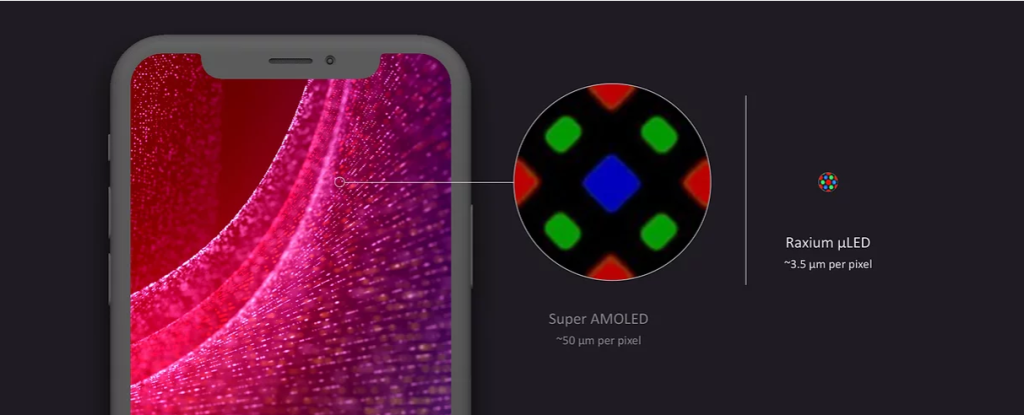
Image: Raxium.com
Snapchat is crafting stories in AR
Augmented Reality is not just for fantasy animals or engaging games. The social platform with the most advanced AR features is Snapchat. In 2019, the company announced it would invest $1 billion in AR content and developments. Recently Snapchat rolled out a series of AR features focused on enabling purchases in-app for brands and creators.
Another use for AR is storytelling. Snapchat partnered with The Los Angeles County Museum of Art to explore monuments and murals, representation, and history. In the clip below, you can see The River Once Ran, a Lens created by artist Judy Baca and Lens creator Holliday Horton.
Artist @judybaca and Lens Creator @HollidayHorton built The River Once Ran as part of @LACMA × @Snapchat: Monumental Perspectives Collection II. The Lens activates layers of history, recovering stories of diverse communities and exploring the consequences of taming the LA River. pic.twitter.com/L4Y8axmW8I
— Snap AR (@SnapAR) April 20, 2022
Lenovo won 3 Webby Awards for its innovative AR campaign, MLKonMLK
There are 955 streets that bear Martin Luther King Jr’s name and Lenovo transformed all of them into an immersive experience to celebrate black history. The company partnered with the DuSable Museum of African American History and created the MLKonMLK AR campaign, an immersive educational experience that brings Martin Luther King Jr.’s “I Have a Dream” speech to every single MLK street using augmented reality.
Congratulations, @Lenovo for winning 3 Webby Awards with the creative & innovative MLKonMLK #AR campaign! via @TheWebbyAwards https://t.co/tjS9hW8Nx6
How it was made: https://t.co/R8wjF9Gt9Y #AugmentedReality pic.twitter.com/pZ6Ix0AKlZ— BRAND MINDS (@brand_minds) May 3, 2022
Do you have a musical ear? Now you can play music in VR!
Making music is now easier with VirtuosoVR, the VR musical sandbox. Started in 2020 as a hobby project by Jonatan Crafoord, audio director on Angry Birds, LittleBigPlanet, and Minecraft, VirtuosoVR was released on Meta Quest, Rift and Steam VR in March 2022.
Which instrument in Virtuoso is your favorite and why?👀🤩🎶
Let us know in a comment below what’s your pick between Board, Oorgan, wHarp, Wavemin, Empads or Clustr!✨🥁🎹#vr #music #steamvr #quest2 #makingmusic #dj #virtuosovr pic.twitter.com/i96M8IP4ri
— VirtuosoVR (@VrVirtuoso) April 25, 2022
Discover your inner painter with Vermillion VR
We’ve seen VR use cases in entertainment, education, healthcare etc. Here’s another rather surprising use case for VR: painting, may it be as a hobby or for professional painters.
Vermillion is a VR oil-painting simulator created by Thomas van den Berge, a VR/AR developer. Vermillion started as an after-hours project during the first lockdown of 2020, where Thomas discovered the joy of painting through building a prototype.
Looking to upgrade your business and prepare for the future?
Attend BRAND MINDS 2022!
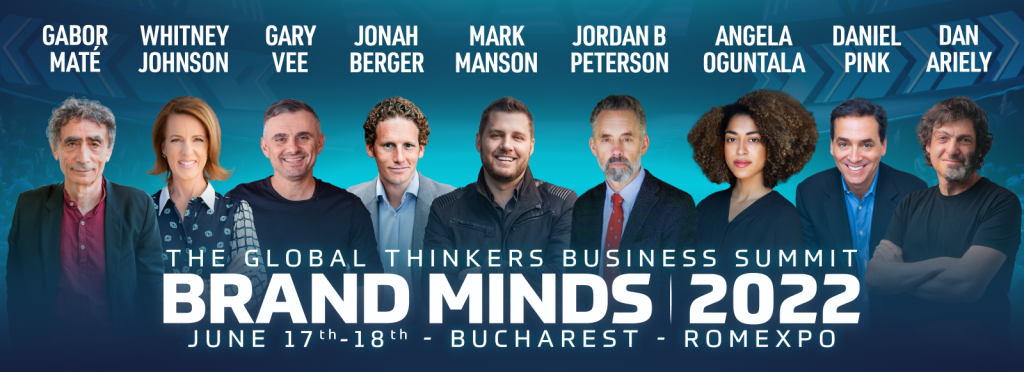
4 technologies every business should use to achieve their goals effectively in 2021
What are 4 technologies every business should use to achieve their goals more effectively in 2021?
1. Digital Automation
What is automation? Automation is the elimination of all manual labour through the use of automatic controls that ensure accuracy and quality.
The term automation was first coined in the 1940s at the Ford Motor Company and was applied to the automatic handling of parts in metalworking processes.
The industrial revolution leveraged the power of machines to produce goods at scale. The digital revolution began in the late 1970s and ushered in a new way to manage business processes.
The benefits of automating business processes are many, ranging from efficiency boost, reduced costs to increased productivity.
Automation in business means using technology to replace manual effort and repetitive tasks allowing employees to tackle creative tasks or other projects where they can add real value.
In October 2020, leading Robotic Process Automation software (or RPA) UiPath’s survey on automation skills found that 70% of senior executives want non-technical employees to have automation and AI skills.
Here are 6 examples of business automation tools:
- ServiceNow is a cloud-based workflow automation platform that enables enterprise organizations to improve operational efficiencies by streamlining and automating routine work tasks;
- ActiveCampaign is a marketing automation platform, combining advanced email marketing features and an enterprise standard CRM;
- Hootsuite automates your social media marketing;
- Grammarly automates proofreading and spell-checking;
- Agile CRM automates workflows across sales channels;
- Zoho Recruit helps HR managers source, track, and hire the best candidates;
The global marketing automation market size alone was valued at USD 4.06 billion in 2019 and is expected to grow with 9.8% from 2020 to 2027 (source).
Is your business automating its processes? How much of your employees’ tasks are automated to reduce time, cut costs and increase productivity? Is your organization going through digital transformation?
2. Robotics
In 1947, science fiction author Isaac Asimov devised the Three Laws of Robotics, a set of rules created to protect humans interacting with robots.
The robots that we see now are yet to achieve the sophistication level of the robots that Asimov has imagined seventy-three years ago.
Our robots come in many shapes and sizes. From standard robotic arms working in factories to Amazon’s cobots packing orders five times faster than a human warehouse worker and Sophia, the humanoid AI Robot who can simulate a full range of facial expressions, look people in the eyes and conduct natural conversations with them.
The robotics industry market is predicted to exceed USD24 billion by 2030, an increase with a CAGR of 28.6%. Find other interesting robotics industry statistics and the latest challenges in robotics.

Mos Burger’s remote-controlled robot (source: japantoday.com)
The latest innovation in robotics comes from Mos Burger, a Japan-based burger chain which tested the OriHime robots in its restaurants. These robots are remote-controlled by restaurant employees from home. Each robot is clad in a trainee uniform and equipped with a microphone and camera, so workers can personally serve customers and answer their questions about the menu (source).
In this example, the robots are not taking the jobs of the restaurants’ employees but act as a replacement, a body double if you will. An innovative solution perfectly adapted to pandemic times.
Farming is another industry with great potential for automation. Spot, the now-famous Boston Dynamics dog-like robot opens doors, walks up and down the stairs, carries payloads of up to 14kg and can haul a truck together with nine of his “siblings”.
Recently this year, a fleet of Spots was deployed to a farm in New Zealand to conduct agricultural tasks: inspecting crops, navigating rough terrain and gathering data in real-time. It was strange seeing the robot successfully herding sheep. Yes, the robot-like dog could prove more useful to any farmer, but it won’t replace a dog’s playful bark and loving eyes any time soon.
3. The surprising use of gaming in business
It’s been almost a year since the pandemic started. At first, we were happy to use Zoom and Zoom was certainly happy to see its stock more than double (up 107.2%) over the past three months and skyrocket nearly eightfold (up 680.2%) year to date (source).
Now we’ve grown increasingly tired of going on Zoom meetings. Mental health experts identified two new work-related conditions: Zoom fatigue and Zoom burnout.
Is there a more pleasant way of conducting team meetings or business meetings?
Gaming seems to be the answer for some professionals. Why stare at your colleagues inside six or nine small screens when you can bond on Red Dead Redemption 2? Why add to your business partner’s zoom fatigue when you can relax first, go shoot some guns in Grand Theft Auto and then discuss business details as this New York Times article points out.

Unilever Russia went even further and designed a career fair in the format of an online game, where users could visit 8-bit versions of company office buildings, learn job details and communicate with virtual representatives.
4. Augmented Reality experiences for a touchless economy
2016 will go down in history as the year the world saw a cultural phenomenon go global, the PokemonGo.
It is estimated that 27 million users played the AR-based game and $950 million in revenues were generated.
The same year, Snapchat bought Augmented-Reality start-up Cimagine Media.
Today Snapchat is synonymous with AR. Recently, the company rebranded itself as a camera company, with the goal of empowering people to express themselves, live in the moment, learn about the world, and have fun together.
AR is Snapchat’s unique feature that attracts over 170 million Snapchatters, nearly 30 times every day according to the latest reports by Snap.
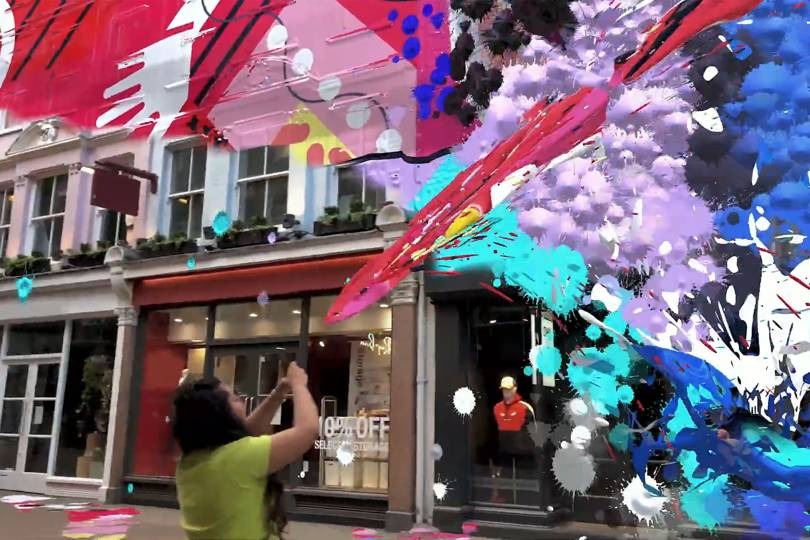
Snap Local Lense (image source: wired.com)
This year, the social media company launched Local Lens, a new feature that promised to transform whole neighbourhoods into digital canvases.
Apart from the obvious entertainment opportunity, AR is also a tool that can be used by businesses to drive engagement and fulfil customers’ needs.

image source: Trendwatching.com
Augmented reality firm Moviebill launched Inflight, AR versions of airlines’ safety cards, duty-free magazines, and inflight menus.
How does Inflight work? Passengers can use their smartphones to scan an image (such as an airline’s logo) on their tray table to see the content ‘come to life’ in 3D. The idea is to help airlines get rid of items that are touched by many crew members and passengers, as well as create more engaging customer experiences.
Do you think your business could implement this technology for the benefit of its customers?
3 Creative Augmented Reality (AR) Award Winning Marketing Campaigns
Curious to learn how brands use AR (augmented reality) technology to design creative award-winning marketing campaigns?
Here are 3 creative augmented reality (AR) award-winning marketing campaigns for your inspiration
JFK MOONSHOT Campaign – Winner in Augmented Reality, at the 12th annual Shorty Awards
The JFK Moonshot campaign was launched in 2019 by the JFK Presidential Library & Museum to celebrate 50 years from the Apollo 11 Mission. The mission was the first spaceflight that landed humans on the Moon and one of the greatest technological achievements of the 20th century.
Seven years earlier, John Fitzgerald Kennedy gave his now-famous “We choose to go to the moon” speech in which he characterized space as a new frontier and outlined the pioneering spirit of the American nation.
We choose to go to the Moon in this decade and do the other things, not because they are easy, but because they are hard; because that goal will serve to organize and measure the best of our energies and skills, because that challenge is one that we are willing to accept, one we are unwilling to postpone, and one we intend to win, and the others, too.
John F Kennedy, “We choose to go to the Moon”
In 1969, almost 600 million people around the world tuned in to watch man’s first steps on the moon with excitement and awe. In 2019, thanks to its augmented reality-based campaign, the JFK Presidential Library & Museum prompted the same emotions of bewilderment and curiosity.
JFK Moonshot was a fully-synchronized augmented reality recreation of Apollo 11 where every moment, manoeuvre, and milestone unfolded in real-time, second-by-second.
Campaign challenge:
Celebrate 50 years from the launch of Apollo 11
JFK Moonshot Campaign features:
- Dedicated mobile app;
- Interactive AR games;
- Archival NASA footage;
- Educational multimedia experiences;
- a 363-foot, full-scale replica of the Saturn V rocket, one of the largest AR objects ever created;
- Livestreaming of the AR launch and entire mission on Twitch, the popular gaming platform.
Campaign viewers were invited to:
- Explore and launch an AR replica of the Saturn V rocket;
- Track 100+ hours of the Apollo 11 mission in real time with archival NASA footage;
- Play AR games designed to extend their knowledge of the mission with JFK-related trivia questions;
- Learn about JFK’s critical role in the moon landing through educational multimedia experiences;
- Record and share the mission’s most epic moments with friends and family;
- Practice their own moon landings with interactive AR games.
Campaign results:
- 110,000+ rocket launches around the world;
- 140,000+ downloads of the app;
- 8x more social mentions than competitive museums;
- 240,000,000+ global brand impressions;
- An 11% increase related to JFK inspiring innovation.
ADIDAS ORIGINALS DEERUPT Campaign – Winner in Augmented Reality, at the 11th annual Shorty Awards
Adidas’ campaign, Originals Deerupt was created with a specific community in mind: the sneakerheads.
What is a sneakerhead? A sneakerhead is someone who collects, trades and or admires sneakers as a hobby. Sneakerheads see sneakers as status symbols and they are mostly Millennials and Generation Z-ers.
The sneakerhead culture began in the 1970s and the internet turned it into a global phenomenon. These days sneakers are like stocks and last year, Financial Times estimated the sneaker resale market close to US$2billion.
Some say the rarest and the most desirable sneaker ever made is the Nike MAG, the sneakers worn by Marty McFly when he time-travelled to 2015 in the Back to the Future II movie.
The biggest sneakerhead? The biggest sneakerhead is entrepreneur Miles Nadal, who spent more than US$1.2 million on a collection of rare sneakers in a sale managed by Sotheby’s last year. The collection includes a pair of 1972 Nike Waffle Racing Flat “Moon Shoes”, one of the most significant artefacts in Nike’s long history.
Campaign challenge:
Launch Deerupt in such a way to combat low-quality photos that emerge on the internet as a result of product leaks and democratize unboxing.
Adidas Originals Deerupt launch campaign features:
- The AR rendering of the DEERUPT;
- A dedicated mobile web platform that allowed Sneakerheads to use their smartphone cameras to see and interact with an AR rendering of the DEERUPT;
- Empty shoe boxes sent to high profile sneakerheads;
- In-store experiences around the world.
Campaign results:
- 110 Million views;
- 50,000+ virtual unboxings;
- 123+ countries.
#ROMANOVS100 AR PHOTO ALBUM Campaign – Winner in Creative use of technology, the 12th annual Shorty Awards
#Romanovs100 is an educational project designed to bring to light a part of Russian history which has been erased from the history books by the Soviet rule. The Romanovs were Russia’s last Royal family, executed by the Bolsheviks 100 years ago.
The inspiration for this campaign came from the Romanovs themselves. They were pioneers of photography capturing almost every meaningful event in their lives with Kodak cameras, the world’s first portable cameras.
Fortunately, the Romanov archive has been preserved. The team unearthed over 4000 photographs which were adapted to digital formats allowing the campaign to make history easily accessible and engaging as well.
Campaign challenge:
Transform content to an interactive AR book which makes learning experiences an emotional journey into history.
Campaign features:
- 180° retro images in spherical view, 3D immersive experience;
- 42 short documentary-style videos;
- A limited print edition of the project using AR technology to create an interactive history book;
- Ambrotype posters – Photo teasers using 160-year-old ambrotype photography technique;
- Original soundtrack;
- Music video combining photos & VR Animation;
- The world’s first-ever digital colourization contest.
Campaign Results:
- 25 million impressions;
- 55,000 fans and followers;
- +1 million post engagements;
- +1 million video views;
- 500,000 minutes watched;
- #Romanovs100 on Twitter grew 2000%
- Global media coverage: BBC Newshour, History Extra etc
Join the Conversation
We’d love to hear what you have to say.
Get in touch with us on our LinkedIn Page, Facebook Page, Twitter or TikTok.
2019 Webby Awards – 3 Winners in Brand Strategy & Experience Marketing
Established in 1996, The Webby Awards is honouring the best of the internet.
The 23rd Annual Webby Awards received 13,000 entries from 70 countries and all 50 states and generated over 9 billion media impressions worldwide.
Here are 3 winning campaigns in the Brand Strategy & Experience Marketing categories:
1. Burger King – the Whopper Detour
The competition between Burger King and McDonald’s began over sixty years ago. With the advent of the internet, these two giant fast-food restaurant chains brought their rivalry into digital. Both Burger King and McDonald’s have entered the creative race where each of them is looking for the next most creative marketing campaign to earn media buzz, fans attention and sales.
The Whopper Detour campaign is a great example of beacon marketing.
Beacon marketing is a form of communication between brands and their consumers based on beacon technology.
You can read all about this technology here: How can Beacon Digital Marketing Help Your Retail Business Thrive?
Using this technology, Burger King essentially turned 14.000 McDonald’s locations into Burger King restaurants.
Pretty smart, right?
According to official statements, it took Burger King almost a year to prepare the promotion. The campaign is entirely reliant upon technology (beacon technology, the app) so it was vital to the campaign’s success that everything goes smoothly.
Campaign goal:
Get people to download the Burger King app.
Campaign results:
- 50.000 Twitter mentions;
- Going from #686 to #1 in the app charts in 48 hours;
- 1.5 million downloads in 9 days;
- 3.3 billion impressions;
- Mobile sales 3x during promotion and 2x after the promotion ended;
- Highest store traffic in 4 years.
The Whopper Detour campaign won in the Advertising & Media Category for Brand Strategy.
2. One Strange Rock – Astronaut Reality Brand Experience
One Strange Rock is a TV-series documentary filmed by Hollywood movie director Darren Aronofsky and hosted by Will Smith.
The documentary explores the fragility and wonder of planet Earth by following eight astronauts who share their unique perspective on our planet.
But this experience is quite exclusive, isn’t it? Only 536 people have been to space.
To launch the show, the team at McCann NY asked themselves the following question: what could we do to allow other people – people who will never be astronauts – to enjoy a similar experience?
Learn more: These 7 Brands Used Augmented Reality Creatively
To answer this question they came up with the Astronaut Reality Helmet, which provides users with one-of-a-kind VR space experience.
Campaign goal:
Raise media attention.
Campaign results:
- 312 million impressions;
- 47 pieces of press coverage;
- over 457 social shares;
- 1.27 billion readers online;
- One Strange Rock viewership was 13% higher than the channel’s non-fiction average performance.
The Astronaut Reality Brand Experience won the People’s Choice Award in the Experience Marketing category.
3. Carlings – ADDRESS_THE_FUTURE
There are digital influencers on Instagram with millions of followers promoting real-life clothes. Miquela, a non-human influencer is one example.
How about real-life influencers promoting digital clothes?
Norwegian retailer Carlings took this idea and turned it into reality.
The brand designed a digital clothing line to illustrate its brand values: sustainability and fashion creativity. The clothing line is a collaboration between the brand and CGI model Perl and includes various fashion pieces: jeans, vests, jackets and coats at prices ranging between 10 euro to 30 euros.
With this digital line of clothes – called Neo-Ex, Carlings helps its customers share their style online – via 3D rendering – without leaving a negative footprint on the world.
With this project, we wish to challenge ourselves and the entire industry into taking the next step. We really believe it’s an interesting issue to address – do all clothes need to be physical?
Carlings
Campaign goal:
Raise awareness of water consumption in the clothing industry
Campaign results:
- +25 pieces of press coverage;
- +10k impressions for the Instagram post announcing the launch of the clothing line.
The ADDRESS_THE_FUTURE campaign won the Webby Award in the Experience Marketing category.
Join the Conversation
We’d love to hear what you have to say.
Get in touch with us on Facebook Group and Twitter.
Learn A New Language With This Innovative App
Have you learned English or French in school from old worn out paper manuals?
Well, this old-fashioned way of learning languages is gone!
There’s a new and more exciting way introduced by this app: the Mondly Languages app.
What is the Mondly Languages app?
Mondly Languages is an app which combines solid neural science with cutting-edge technologies to help its users speak languages.
Mondly Languages uses AR and VR to offer its users immersive experiences. In this way, the user learns faster.
It also allows you to learn any of the 33 languages from your native language.
Mondly’s Mission
We founded Mondly to revolutionize the way people learn languages. We are passionate about using the latest technology in order to create the best and most effective language learning experience for our users.
Alexandru Iliescu, CEO of Mondly Languages
Mondly’s innovative features
- The first voice-enabled chatbot for language learning;
- The first Virtual Reality language app with speech recognition available for GearVR, Daydream and Cardboard;
- The first Augmented Reality experience in the world that uses speech recognition to help you learn languages;
- There are no computer-generated voices, all recordings in Mondly are made with native speakers.
Benefits of using Mondly Languages
- It’s fun, fast and easy;
- It offers immersive experiences;
- The app’s virtual teacher engages you in conversations, giving instant feedback on pronunciation;
- The Mondly chatbot brings language lessons to life.
Mondly in the media
INC.com – “The New Way to Learn Languages”
Bloomberg.com – “The closest thing to Classroom Education”
Forbes.com – “A practical approach to language learning likely to be widely adopted.”
Digital Trends – “The Mondly experience leverages the immersive quality of VR”
TheNextWeb.com – “The Closest Thing to Actual Immersion”
Huffington Post – “Virtual reality the new and sexier way to learn languages”
VentureBeat – “A lot more fun and easier than just reading flashcards”
Mondly by Numbers
- Founded in 2013 by brothers Iliescu, Alexandru and Tudor;
- 40 million downloads worldwide to date;
- Used by people in 190 countries;
- An average rating of 4.7 out of 5 from over 1M reviews;
- 33 languages.
Awards and Recognition
- Was chosen as “Editors’ Choice” by Google Play in late 2017;
- Won Facebook’s FbStart “App of the Year” in EMEA;
- Alexandru Iliescu, CEO of Mondly won Founder of The Year Award at the 2018 Central European Startup Awards.
Join the Conversation
We’d love to hear what you have to say.
Get in touch with us on Facebook Group and Twitter.
These 7 Brands Used Augmented Reality Creatively in 2018
2018 has seen brands fighting tooth and claw to attract consumers’ attention. Competition is fierce in every market so successful brands are using digital tools to support their creativity.
Augmented Reality is one such tool and brands are using it to raise brand awareness, increase engagement as well as sales. According to emarketer.com, the global augmented reality ad revenues are expected to top $2 billion by 2022.
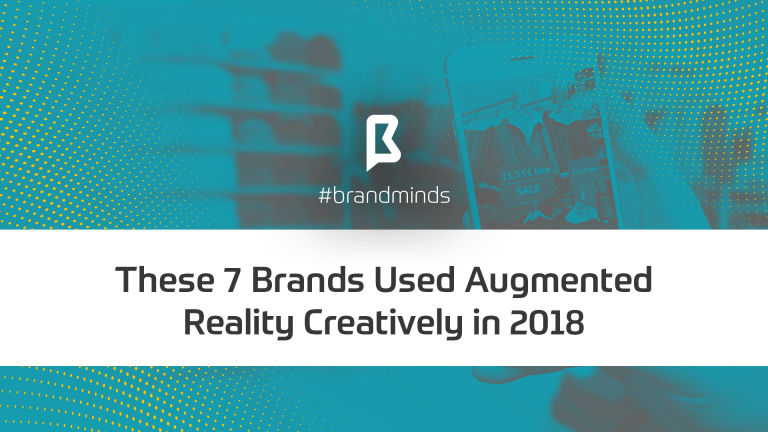
Let’s see how these 7 brands used Augmented Reality creatively in 2018:
1. National Geographic
The National Geographic is one of the oldest publishing houses in the world: this year it turned 130 years old (Happy Birthday, Nat Geo!).
The magazine managed to keep itself young and appealing to readers of all ages by embracing new and up-to-date channels of communication.
One of this year’s monthly edition delighted readers with an Augmented Reality cover:
2. Barilla
For retail products, the battle is fought on the shelves of the supermarkets.
Brands are implementing various marketing strategies to stand out and get their products from shelves to checkout: smart packaging design, discount prices, 2-in-1 offers etc.
Barilla joined the ranks of technology driven brands and used Augmented Reality for their pasta boxes to trigger pasta recipes:
3. LEGO
LEGO is kids’ favourite play game and the world’s largest toy company by revenues, with sales amounting to $2.1 billion in 2015. Founded in 1932, today’s parents grew up playing with LEGO and are passing down this game to their children.
Over the past years, the brand embarked on a new direction, shifting towards entertaining both kids and their parents with two blockbuster movies: The Lego Movie (2014) and The Lego Batman Movie (2017).
Everyone loved seeing the tiny yellow figurines coming to life on the big screen, so the brand now offers the same experience although on smaller screens using Augmented Reality.
This is what Lego in AR looks like as presented at the 2018 Apple Worldwide Developers Conference:
4. Moschino and H&M
Fashion and technology have a history together. Alexander McQueen was the first fashion designer to include robots: he used two robots in his 1999 fashion show. In 2006 he took it one step further and sent Kate Moss down the runway not in flesh and blood, but as a holograph.
In 2018, Dolce and Gabbana used drones to show its handbags collection and Moschino paired with H&M to create an Augmented Reality experience for their global launch event in New York:
5. Walmart
For retail chain stores, it’s not enough to display great products at discounted prices.
You need to go even further and add entertaining to your offer!
With the help of Augmented Reality tech, Walmart is providing its shoppers with in-aisle fun and entertainment.
6. BMW
For anyone passionate about cars, going to automobile events or launches and seeing so many shiny new cars on display would be a dream come true!
But not many people are fortunate enough to have such an experience.
BMW caters to their needs and uses Augmented Reality to bring the car to them:
7. 19 Crimes
Every wine label tells the story of the wine: how man and nature worked together to produce that particular wine variety.
What if you could use more than words to convey the story?
Well, now it’s possible.
Here is how this Australian wine brand uses Augmented Reality to tell the story of its lineup wines:
Join the Conversation
We’d love to hear what you have to say.
Get in touch with us on Facebook and Twitter.
BRAND MINDS’ Guide to Successful Digital Marketing in 2019
Do you want your digital marketing to be successful in 2019?
Use BRAND MINDS‘ Guide to Successful Digital Marketing!
The world of marketing, especially digital marketing, is fast paced and ever changing. Blink and you might just miss the next big trend.
Implement the following 8 tips for digital marketing success in 2019:
1. Use Digital as a Key Component to TTL Campaigns

The important thing to remember with marketing today is that it’s no longer just about marketing digitally. Digital marketing has transitioned to marketing in a digital world, which creates more scope for campaigns.
I believe that digital marketing should be used as part of TTL marketing campaigns, so that your message gets attention from both ATL and BTL audiences. Online or offline, all areas should be explored when it comes to positioning your brand and aligning it with your audience. This will help you to maximise your reach and generate more leads and conversions.
It’s important to remember that by advertising across a variety of different platforms, you are expanding your audience. Some people believe that to be a good marketer, you should focus on one platform and do that right, but I believe that by advertising in as many places as possible, you gain increased visibility and generate stronger branding.
PR and Digital Marketing are also becoming ever more intertwined, with brands gaining exposure and building links across a variety of platforms. Co-marketing and influencer marketing are also great ways to increase reach and awareness.
[bctt tweet=”Use Digital as a Key Component to TTL Campaigns” username=”brand_minds”]
2. Personalisation

Clever personalisation is the key for effective marketing in 2019.
Gone are the days when a blanket email campaign would suffice. It is vital to segment your audience into relevant sub categories and to target the relevant cross sections with the most relevant offers and information.
Generating personal recommendations on your page is also a great way to get more sales. Link sell by showcasing popular items purchased by others after searching on the page that your user is on. If consumer behaviour is anything to go by, you should definitely see an increase in your conversions. This tailored user journey is also easy to navigate and enjoyable for your customer.
[bctt tweet=”Clever personalisation is the key for effective marketing in 2019″ username=”brand_minds”]
3. Chatbots

Chatbots and AI have become essential tools for online customer service. Save on time and money by implementing chatbot technology to answer FAQs quickly and effectively.
Over the next five years, the use of bot messengers will be ramping up and chatbots will perform 80% of all communication with customers. Chatbots can be connected to websites, apps and social media platforms to answer customer enquiries and to gather important user information that can be used to create better marketing strategies.
Learn more: How To Use Chatbots To Increase Sales
Grand View Research did a study in to the global chatbot market and discovered that the market had a 24% annual growth rate which amounted to $1.2 billion last year alone. 45% of end users also prefer using them as a primary mode of communication in customer service too apparently.
[bctt tweet=”Save on time and money by implementing chatbot technology to answer FAQs quickly and effectively” username=”brand_minds”]
4. Voice Search

Voice interfaces are becoming an ever more common feature in modern homes and people are using voice searches and features to search quickly and to share information via soundbytes.
According to Google nearly one third of the 3.5 billion searches performed on Google every day are voice searches. Personal assistant devices are used for the majority of these searches.
Like any form of SEO, voice search gives precedence to high ranking sites. Being an authority in your industry, responsive search functions and active social channels will help to boost your ranking. According to studies content with high levels of social engagement performs well on voice search, with content with over 1199 shares on Facebook and 44 on Twitter featuring more predominantly in search.
Other factors to consider are the use of https instead of http and remember to pay attention to your snippets. You’re increasing your chance of being discovered in voice search if your snippet becomes a featured one.
Take care to tailor your description of what your page is about for good ranking. Backlinko state that 40.7% of voice searches come from featured snippets which is staggeringly high. Be sure to use this to your advantage.
[bctt tweet=”Optimise your website for voice search” username=”brand_minds”]
5. Social Stories
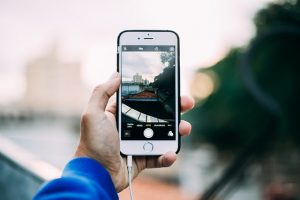
With popular culture reigning supreme, Stories have quickly become the marketing choice for savvy marketers.
Since the launch of Snapchat back in 2011, social media users everywhere have been getting to grips with advanced technologies such as filters, augmented reality, boomerangs and superzoom to allow them to get creative and to generate captivating and engaging stories for their followers.
Learn more: 3 E-Commerce Brands Using Instagram Stories Effectively
Instagram Stores and Facebook Live became pivotal tools for story-telling in 2018 and will continue to do so in 2019.
According to Instagram, one in every five organic stories prompts at least one customer message. This is probably because these ads appear native in their format and are less interruptive than other social media ads. Either way the potential is huge.
[bctt tweet=”Be smart in 2019 and use Stories to your advantage.” username=”brand_minds”]
6. Video
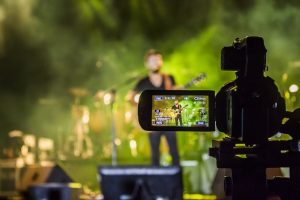
Video will continue to grow in 2019.
Live video is being used more and more to showcase and raise awareness for important brand moments. Videos have 135% times more organic reach than your typical Facebook post with 1200% more engagement than image and text posts (Forbes).
Learn more: How To Increase Conversions With Video Marketing
The stats below show the importance of video for brand:
- 70% of consumers say that they have shared a brand’s video (via Wyzowl);
- 72% of businesses say video has improved their conversion rate (via Wyzowl);
- 65% of executives visit the marketer’s website and 39% call a vendor after viewing a video (via Forbes);
- 52% of consumers say that watching product videos makes them more confident in online purchase decisions (via Invodo).
The important thing to remember is that several companies have created 360 videos in the past year – especially for showcasing things like weddings and interiors. This trend will continue to grow in 2019.
The full capacity of 360 video has yet to be uncovered. This is just the tip of the iceberg and what’s to come will be even more exciting.
[bctt tweet=”Use 360 videos to showcase your products” username=”brand_minds”]
7. Micro Moments

Google’s research teams have uncovered a new type of consumer behaviour called the micro moment. These moments seemingly occur when people reflexively turn to a device to either learn something, do something, get to know something or buy something.
Google have coined these moments the:
- I-want-to-know
- I-want-to-do
- I-want-to-go
- I-want-to-buy
Users experience these moments 150 times a day according to Think with Google. The trick with this is to target consumers with exactly what they want at that right moment to increase conversion rates.
[bctt tweet=”Leverage the Micro-moments to increase conversion rates” username=”brand_minds”]
8. AR/VR
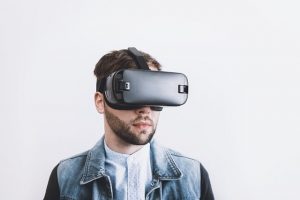
Both augmented reality – which layers virtual components on a real life backdrop, and virtual reality – which creates an entirely virtual world that can be accessed via a headset, will become a bigger part of experiential marketing in 2019.
These tools aid in the decision making process for products that need to be visualised before purchase. The AR/VR experience is incredibly beneficial for interior design, weddings, clothing and beauty products to name but a few.
Learn more: 3 Snapchat Campaigns Powered by Augmented Reality
Clothing giants Gucci and Zara have both used AR in their marketing campaigns over the past year. Gucci launched the ‘Gucci Hallucination’ in 52 of its stores, while Zara introduced AR screens that showcase their lookbook in 120 stores. These screens have sensors that interact with mobile devices to facilitate easy shopping in one simple click, bringing a truly futuristic element to their marketing and marking a significant increase in conversions.
[bctt tweet=”Use AR/VR to shorten your customers’ decision making process” username=”brand_minds”]
Key Takeaways
- Marketing today is no longer just about marketing digitally;
- Use digital marketing as part of your TTL marketing campaigns;
- Clever personalisation is key for effective marketing in 2019;
- Save on time and money by implementing chatbot technology to answer FAQs quickly and effectively;
- Optimise your website for voice search;
- Pay attention to your snippets: 40.7% of voice searches come from featured snippets;
- Use Social Stories to your advantage;
- Use 360 videos to showcase your products;
- Leverage the Micro-moments;
- Use AR/VR to shorten your customers’ decision making process.
Join the Conversation
Now that you’ve read our BRAND MINDS’ Guide to Digital Marketing in 2019, we’d love to hear what you have to say. What will you be implementing in your marketing plan for the coming year?
Get in touch with us on Facebook and Twitter. We’d love to hear your views!
3 Snapchat Campaigns powered by Augmented Reality
Snapchat is undoubtedly leading the user experience of augmented reality in social media. In 2016, the Pokemon GO frenzy took the world by storm and showed the incredible appeal of AR for users.
In the following years, brands have looked for ways to use AR to raise engagement on Snapchat and draw users’ attention to their products.
Discover 3 brand campaigns powered by augmented reality and delivered through Snapchat:
BMW
As part of its 2017 ad campaign to launch the BMW X2, the famous carmaker became the first brand to create a 3D augmented-reality version of a product with Snapchat.
During the campaign, consumers on Snapchat began seeing ads from BMW that linked to the augmented-reality version of the new car. When someone swiped on the ad, it opened the camera and the gold car appeared in the frame. A person could then virtually walk around the car and see all its details and even change its color.
Nike
Nike partnered with Snapchat and Shopify earlier this year for the pre-release of Air Jordan III Tinker. 2018 marks 30 years since Michael Jordan made history with his free throw line dunk in 1988 Slam Dunk Contest win. It is one of the most memorable moments in NBA history and Nike wished to celebrate it.
Using 3D and augmented-reality technology, Nike brought Michael Jordan through Snapchat to the younger generation that has never seen him play. But the experience didn’t stop here. With a tap on the screen, the user was able to purchase a pair of Air Jordan III Tinker which was delivered to their home address within two hours. The pre-release shoes were sold out in 23 minutes.
Watch the video here.
Foot Locker
The holidays tend to bring out the best in advertising, leading to fierce competition to make an impact. This often means clever brand partnerships.
One such example is the collaboration between Foot Locker and Snapchat on Christmas 2017. Foot Locker designed an unboxing experience for Snapchatters in which they delivered animated Jordans that users could customise and dunk.
Instagram stories, AR, short-term content and chatbots – to be watched in 2018
Until now there has been a lot of talk about the Millennials, about how present they are in the digital environment and what type of content they prefer. After them comes strongly the Z Generation, meaning the people born between 1995-2012, that will represent 40 percent of the consumers’ market in 2020.
The manner in which they are changing the rules of the game and re-configuring the experiences with the brands is analyzed in the report Digital Recap 2018, created by The Bridge – Golin’s social media & digital hub – and the blogger Alex Ciuca (Hoinaru), available on www.digitalrecap.ro.
In the new Digital Recap we took a look at 2018 in which the relevance, measurement and analysis will count more than ever. The last year’s trends in content, storytelling, influencers and communities are refining and re-defining themselves in a new communication equation in social media. How memorable is in fact the ephemeral content and how are the brands adapting themselves to the new messages’ temporary reality, through what are the influencers differentiating themselves from the content creators and how is the social media influencing the buying power on this year’s digital agenda,” said Irina Roncea, deputy managing director, Golin.
Found at its seventh edition, the report presents the evolutions and trends in the digital environment, offering at the same time predictions and recommendations for the brands that want to be relevant for the new generation of consumers.
The star remains in 2018 the Instagram Stories, a channel that already attracts massive investment at a global level – almost 25 million companies worldwide publishing stories on Instagram. At the same time the Augmented Reality brings new changes in the interaction between brands and consumers, therefore it will rise the mix of offline-online experiences through viral elements added in real time to a store visit or while looking over a flyer. Also on a growing trend is the Virtual Reality, powered by the diversity and rising accessibility of the VR glasses’ models.
The ephemeral content represents an excellent manner of attracting and keeping the users for a longer period of time, if the brand is telling its story well. Insta Stories can contain teasers of product launches,
making ofs from their creation, exclusive content that can be discovered only in Stories, awards for fans and new communication opportunities with them. From its launch and until the present, the time spent by users in stories has been growing with 28 minutes, while 1 in 5 stories from a brand has been receiving a private message as response. Those are the reasons for which we believe is very important that the things a user sees bring him/her a plus value, in a way or another: to be useful and /or to be funny. A brand that will make its user feel privileged and rewarded for the times pent on its page will for certain have a future,” said Roxana Ionescu, Senior Digital Manager Golin.
Another visible trend for 2018 are the chatbots. Their number grew significantly in the last years, especially with the launch of the Facebook Messenger, in 2016. Therefore, 80 percent of the businesses are already using or planning to use them until 2020, while the global chatbots market is expected to reach USD 1.23 billion in 2025.
How 2017 looked in terms of numbers:
- Facebook has 2 billion users monthly;
- Time Warner invests USD 100 million in shows and ads on Snapchat;
- EUR 2,7 billion has to pay Google for a UE fine regarding a series of wrong doings on the comparing prices’ software of Google Shopping;
- 3000 people are hired by Facebook to check the posts and the videos reported as being hate speech or related to crimes;
- Intel paid 15,3 billion for the acquisition of Mobileye.
- EUR 1,7 million are invested by eMAG in the Zitec company;
- NBC holds 25% of Euronews;
- Amazon spent USD 13,7 billion in order to buy Whole Foods;
- The American company Equifax lost 143 million accounts.
Top trends in shopper marketing in 2018
With a more and more savvy consumer and digital and technology re-shaping it, shopper marketing became in the last years almost a science, relying a lot on research and customer observation. While in the US, the Shopper Marketing magazine developed a very strong research on this year’s trends that can be read here, we asked 3 local advertising specialists to give us their thoughts as well.

Cristina Oncescu, Head of Strategy pastel
What do you believe will be the biggest shopper marketing trends of 2018?
I don’t know if they are the biggest, but they are certainly hot in 2018:
- Personalised shopping
There are many in-store technologies that can be used to provide a personalised shopping experience. NFC (Near Field Communication) chips, QR codes, iBeacons and Visual Light Communications are just some of the emerging technologies used. These, when linked to previous shopping histories via a loyalty app for instance, can provide disruptive yet compelling interactions with the shopper as they enter the store.
- Virtual assistance
From voice to chatbots, going through messenger apps, one-to-one communication is on the rise. Being available and being helpful, when the shopper needs you, is making the difference.
- Augmented Reality
The use of Augmented Reality on mobile devices provides an engaging way for marketers to reach their target audience – it’s quick, easy and very interactive. With the integration of AR on iPhones, it will be easier for marketers to engage larger audiences during their path to purchase.
What are they influenced by and why?
Technology, and especially mobile, led shoppers becoming more and more omnichannel. Now, this is an actual behaviour that the shoppers engage in (of course in a subconscious way). Web, mobile, social, apps – it’s all just shopping to consumers. The separation between retail channels is growing even more blurred by the day. Can they return online products in-store? Can they check if the store has their size and colour on their mobile phone before they leave their homes? Consumers expect a seamless experience across all channels.
What is pastel advising its clients this year?
Great content will always engage. Have an interesting, consistent story and a seamless experience throughout the whole omnichannel path to purchase.

Anton Gherca, Chief Innovation Officer at g7
What do you believe will be the biggest shopper marketing trends of 2018?
We believe that shopper marketing is an area of brand communication that has been kept largely untouched by the digital revolution that is reshaping the advertising industry for the past 10 years. So we expect that „digital BTL” will start gaining momentum, as today’s practices are deeply engrained in traditional approaches of point of sale communication. We think that we will see more connections between social media and shopper marketing, and geofencing and point of sale promotions, with the aim of delivering a more integrated omnichanel shopper experience.
What are they influenced by and why?
Like many things in advertising, the move towards a more „digital” shopper marketing approach is driven by the consumers themselves, or more precisely, by their lifestyle. As of 2017, the penetration rate of smartphones in Romania is 70%, while 41% of the population are already mobile social users. Peer-to-peer ridesharing like Uber makes people understand the benefits of the sharing economy, on-demand services like Netflix put them in the driver’s seat while the wide 4G coverage makes them want everything now. This means people are getting more and more accustomed to having everything at a push of a button and they expect higher levels of service, increased transparency, embedded interactivity and all in all a better customer experience out of everything.
I know this sounds like a bunch of buzzwords cramped togheter in one sentence, and our agency has never been in the „buzz” business, but the reality is that the shift in consumers’ lives is happening with or without us. I think the bottom line is that today’s shoppers are just expecting something more out of marketing communications. More relevance, more engagement, more customization. This doesn’t mean that we, the shopper marketers, can’t still get away with the old „buy one – get one” or „scratch this to win a prize that you don’t even want” mechanics. But wouldn’t that be a pity?
What is g7 advising its clients this year?
Our agency has embarked in a digital transformation journey and once set in motion, it can’t be stopped. We will continue an initiative started in 2017, of hosting periodic innovation workshops together with our clients for identifying the opportunities put forth by today’s technology, and see where that gets us. Still, there are a couple of areas we keep tightly in our focus: Proximity marketing, Loyalty management and Gamification. We work towards integrating in an organic manner these three capabilities in the approach our clients are already used to: honest creative work, deep understanding of shopper behavior and solid deployment in the retail ecosystem.

Ondina Olariu, Business Director Geometry Global
“Fragmentation, increased competition and e-commerce are key words for 2018 and beyond in our region. After seeing a huge expansion, somewhat even inflated for some of the retail players, we will witness a new battleground, named proximity. As global retailers keep expanding, we will live through a great variety of formats, more flexibility and adaptation to micro-retailing needs. Proximity will be influenced as well by the increasing degree of urbanization, as well as the new generations of shoppers, more dynamic, digital savvy and format switchers (in Romania, 25 cities cover 31.3% of total population and 55.6% of urban population – source: INS, Romania, 2017).
And when we say flexibility and adaptation, think beyond format, as we see discounters aggressively stepping in the services territory, while share of consumer spend reached 68% in services vs 32% in goods in 2016 (source: Kantar Global Trends 2018). Goods subscription – meaning bundle goods as a service is something that we preached our clients for a couple of years already and it’s approaching it’s turning point in 2018.
E-commerce in Europe is predicted to reach 10% of total retail (source: Kantar 2018 Global Predictions, WPP Data), with a clear future towards what we call omni-channel, especially since gen Z takes the scene as newest shoppers. At global level we see the switch and struggle of most pure e-commerce players in becoming physical as well, to the level where blogs impersonate the physical space in temporary shops where experience blends with sales, while in Europe we are taking steps into developing the brick-and-mortar into e-commerce, especially for FMCG area, which are the most shopped for categories. Retailers will continue or start monetizing opportunities through their own apps, following the evolution of more mature markets, such as Spain (+210% in app sessions growth in the last 2 years) or Germany (+130%). Here again, it seems that pure digital players have a degree of advancement, since digital-first retail apps saw more that 2x the average sessions / user each month and saw stronger growth in the last 2 years. (source: App Annie 2017 retrospective report). This means we will see accelerated growth for digital players apps, as the new arrivals from physical retailers will need to extract good lessons and apply on fast track.
Blending online and offline expresses also in automation, such as automated cashiers. As retailers will increasingly see value, watch for a retail unemployment crisis, especially in more mature markets. The proliferation of private labels will increasingly force out brands from the physical shelf. Most of these private labels continue to be supported as brands rather than price options, from food to fashion (see Esmara for Lidl and Tex for Carrefour) and home appliances (eg Carrefour Home consumer electronics). Health and Wellness is an increasingly appealing theme, for both brands and retailers. Watch the shelf space growth in store, as well as the latest positioning of certain private labels, trying to capture value and exploit the trend.
As a shopper agency, we are not only advising but already working with our clients on the omni-channel shopper journey models, including retailer strategies and new channels opportunities in this process. We build with them strong e-commerce fundamentals for the Romanian market and expand to e-commerce experiences and integration of channels for more mature markets. We operate with an increasingly complex model that includes data management and A/B testing applied to shopper initiatives and integrate thorough shopper knowledge in every solution we bring to the table. Bonus: an emerging trend, still less visible to this market is the return to D2C (Direct to Consumer). It will be highly influenced by retailers’ behavior, however, more brands become conscious they cannot rely exclusively on retailers and distributors in building their relationship with shoppers and consumers, therefore they’ll be trying to find ways to cut it short to them and bypass the “official” channels.”










